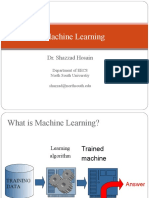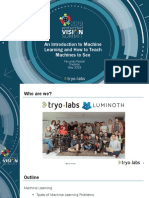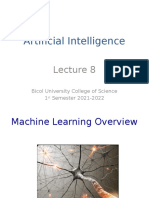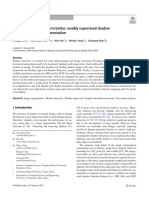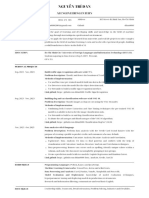0% found this document useful (0 votes)
26 views27 pagesIntroduction To Machine Learning
The document provides an introduction to machine learning, covering its definition, key concepts, and various algorithms including supervised and unsupervised learning. It discusses data representation, feature extraction, and the importance of training and testing data in building machine learning models. Additionally, it highlights applications of machine learning in various fields such as recommendation systems, virtual assistants, and autonomous vehicles.
Uploaded by
mathurarushi4Copyright
© © All Rights Reserved
We take content rights seriously. If you suspect this is your content, claim it here.
Available Formats
Download as PDF, TXT or read online on Scribd
0% found this document useful (0 votes)
26 views27 pagesIntroduction To Machine Learning
The document provides an introduction to machine learning, covering its definition, key concepts, and various algorithms including supervised and unsupervised learning. It discusses data representation, feature extraction, and the importance of training and testing data in building machine learning models. Additionally, it highlights applications of machine learning in various fields such as recommendation systems, virtual assistants, and autonomous vehicles.
Uploaded by
mathurarushi4Copyright
© © All Rights Reserved
We take content rights seriously. If you suspect this is your content, claim it here.
Available Formats
Download as PDF, TXT or read online on Scribd
/ 27










